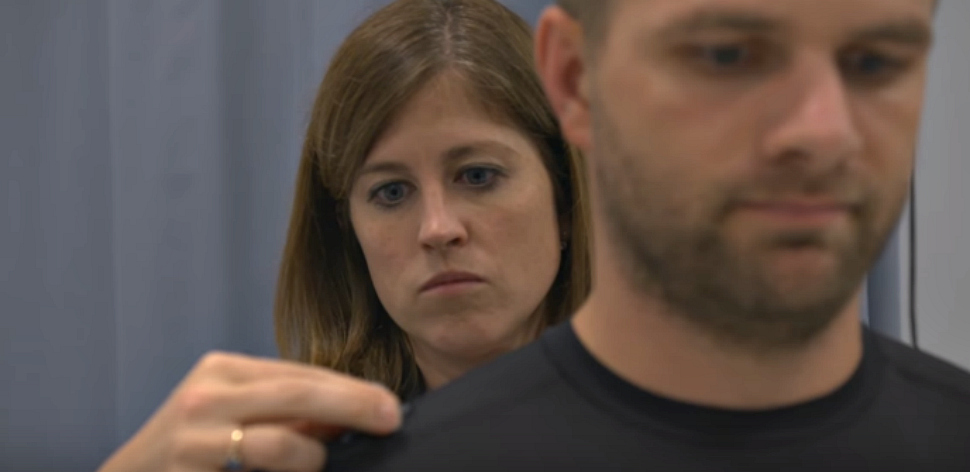John Tolley, October 29, 2016
Most of us take our bodily movements for granted, paying little, if any, attention to the mundane daily tasks that we?ve performed thousands of times before. Yet, there is a ballet of muscles, bones, ligaments, and tendons acting in concert that help us achieve those routine functions. Unfortunately, it becomes more than evident when someone loses the function of a part of their body, like a limb, through either paralysis or amputation.
The University of Michigan?s Rehabilitation Biomechanics Laboratory works to help clinicians and biomedical device engineers better understand exactly how the human body moves and how it operates and adapts to different environments. Deanna Gates, an assistant professor in the School of Kinesiology and Biomedical Engineering, is the lab?s director.
BTN LiveBIG sat down with Dr. Gates to discuss the role of the Biomechanics Lab, how human movement is translated into prosthetic function, and what?s on the horizon.
BTN LiveBIG: Can you explain biomechanics a bit for the general public and how it relates to the work you do in your lab?
Deanna Gates: It?s the study of the way we move. What we?re looking at is basically how we improve mobility in people for whom it?s impaired. How do we get them mobile and able to connect with their environment and move about?
BTN LiveBIG: How does the lab go about achieving that?
DG: We focus primarily on tasks that people perform in everyday life. We don?t study things like sports, but we do study walking. We also study activities of daily living that people perform with their upper limbs. These are really simple tasks like moving things from shelves, bathing and dressing. These can be really hard for people to perform if they have an upper limb amputation.
BTN LiveBIG: What is the current state of prosthetic technology? What are the different types and their limitations?
DG: For upper limb amputations, there are only a few options that are available to people right now. There are body-powered prostheses. These were designed in the 1800?s and the model really hasn?t changed that much at all. So you have direct connection of the prosthetic to the body through a cable. You move one body segment and it helps move another body segment.
The other type is a myoelectric prosthetic. That one uses activity from muscles that are still left in your arm to control the device. They look for what muscles you can put an electrode over and measure and then use that muscle to control movement.
BTN LiveBIG: How are devices evolving?
DG: I think the ultimate goal is to get to that point where you have this direct connection of the body and the device. You have this seamless fit and a pretty light device that acts like you normally would. We?re not quite there yet.
BTN LiveBIG: And how does the research that you?re doing in the lab translate into improvements in prosthetic devices?
DG: We are looking at upper and lower extremity movements. It?s really hard to quantify movement. It?s really hard to know what people have difficulty with and how we can actually measure improvements because there are so many ways that you can perform tasks in your life. When you?re taking an object out of the cabinet, for instance, maybe [the other hand] is busy doing something or maybe you?re standing in a different place. So every time you approach [a scenario], you approach it a little bit differently.
We?re working on small changes in the devices that currently exist. One of those that have come out more recently is just the ability to rotate the wrist. If you can rotate the wrist, you can get it in an appropriate position to interact with objects; you don?t have to do that movement with your upper body. So it enables you to make a more natural movement without as much compensation.
BTN LiveBIG: What are the far-reaching goals for you and your colleagues in the Rehabilitation Biomechanics Lab?
DG: The long-term goal is to get people into a device that is lightweight, waterproof, that functions easily the first time they put it on, that?s intuitive to control and enables them to get back to all of the tasks that they want to be doing and that they did before their amputation.
With additional reporting by Lauren Salituro.







